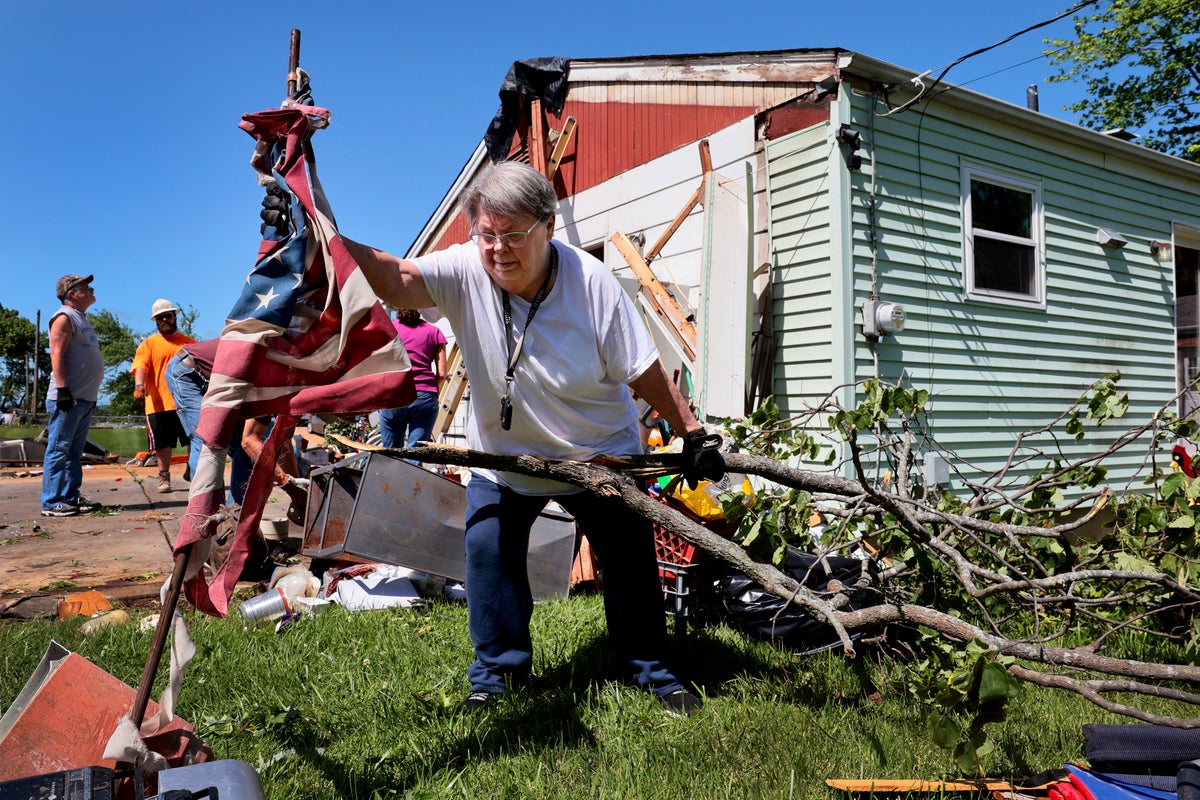
A possible tornado damaged a school and homes in Pennsylvania, the latest in a series of powerful storms that swept much of the U.S. during the Memorial Day holiday weekend and killed at least 22 people.
No injuries were reported, but there was roof damage Monday night to the high school and about six homes in Mahanoy City, Pennsylvania, said David Truskowsky, spokesperson for the city's fire department. School was canceled in the district Tuesday.
The city is about 70 miles northeast of Harrisburg, the state capital.
The National Weather Service, which had issued a tornado warning for the area, planned to survey the storm damage Tuesday morning. Images of funnel clouds were shared on social media.
Before hitting Pennsylvania, destructive storms caused deaths in Texas, Oklahoma, Arkansas and Kentucky and were just north of an oppressive, early-season heat wave setting records from south Texas to Florida.
The death toll of 22 also included seven deaths in Cooke County, Texas, from a tornado that tore through a mobile home park Saturday, officials said, and eight deaths across Arkansas.
Two people died in Mayes County, Oklahoma, east of Tulsa, authorities said. The injured included guests at an outdoor wedding.
Kentucky Gov. Andy Beshear, who earlier declared a state of emergency, said at a news conference Monday that five people had died in his state.
More than 200,000 homes and businesses lacked electricity Tuesday morning in Kentucky, Texas, Arkansas, West Virginia and Missouri, according to PowerOutage.us.
Forecasters warned of a risk of severe thunderstorms in Texas and Oklahoma on Tuesday, with the potential for damaging winds, large hail and flash flooding.
It's been a grim month of tornadoes and severe weather in the nation’s midsection.
Tornadoes in Iowa last week left at least five people dead and dozens injured. Storms killed eight people in Houston this month. April had the second-highest number of tornadoes on record in the country. The storms come as climate change contributes in general to the severity of storms around the world.
Harold Brooks, a senior scientist at the National Severe Storms Laboratory in Norman, Oklahoma, said a persistent pattern of warm, moist air is to blame for the string of tornadoes over the past two months.
That air is at the northern edge of a heat dome bringing temperatures typically seen at the height of summer to late May.
The heat index — a combination of air temperature and humidity to indicate how the heat feels to the human body — neared triple digits in parts of south Texas on Monday. Extreme heat was also forecast for San Antonio and Dallas.
In Florida, Melbourne and Ft. Pierce set new daily record highs Monday. Both hit 98 degrees (36.7 Celsius). Miami set a record high of 96 (35.5 Celsius) on Sunday.
For more information on recent tornado reports, see The Associated Press Tornado Tracker.







